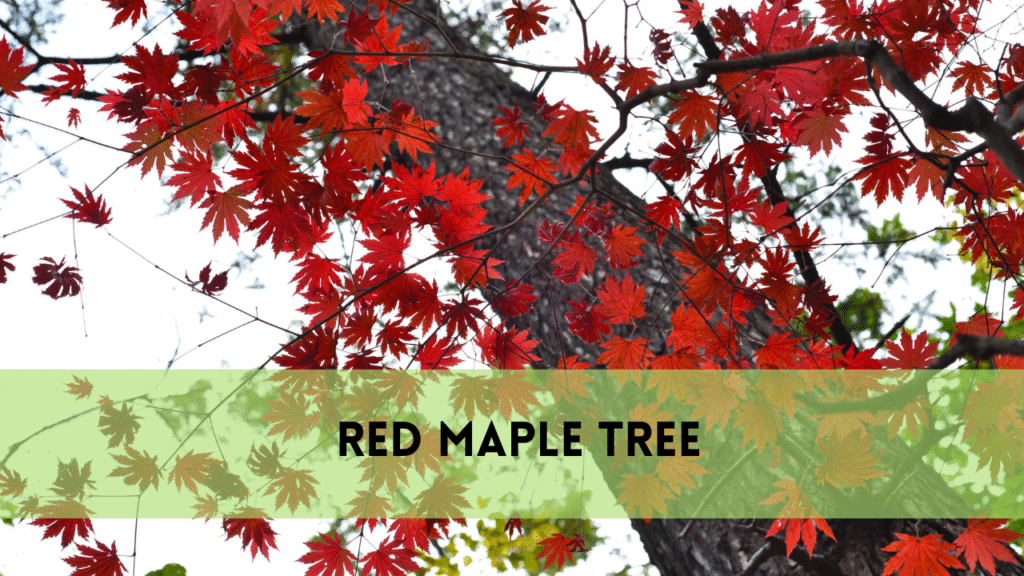Texas pecan tree facts
Crosby Arborist brings you the intriguing world of Texas pecan tree facts. Pecan trees, known for their magnificent grandeur and delectable pecans, have a unique place in the heart of Texas. In this detailed guide, we’ll look at the rich history, growth cycle, and maintenance requirements for these renowned trees. Pecan trees go through a spectacular transformation from lowly seedlings to abundant fruit-bearers, driven by environmental influences and expert care. Discover how climate, soil conditions, and correct maintenance all play important roles in growing healthy, thriving pecan trees. Whether you’re an experienced gardener, a nature enthusiast, or simply interested in Texas pecan trees facts, this book will help you appreciate and maintain these treasured trees. Join us as we discover the beauties of pecan trees and the secrets behind their lasting popularity in the Lone Star State.
Texas pecan tree facts
Types of pecan trees
There are various pecan tree species, each with its own distinct characteristics and qualities. Some frequent variations include:
Native Pecan (Carya illinoinensis): These trees are indigenous to North America and stand out for their colossal, spreading canopy and delicious nuts. These trees occur in bottomland forests and produce nuts with thick shells and a strong flavour.
Improved varieties: Pecan trees have undergone selective breeding to develop a variety of improved varieties with desirable traits like disease resistance, nut size, and flavor. Several prominent enhanced variants include:
‘Desirable’: Known for producing huge, high-quality nuts that are resistant to disease.
‘Stuart’: Produces copious crops of medium- to large-sized nuts with a delicious flavour.
‘Elliot’: is a late-maturing cultivar with tiny to medium-sized nuts and high disease resistance.

‘Pawnee’: An early-maturing cultivar with tiny to medium-sized nuts and high disease resistance.
Seedling Varieties: Seedling pecan trees are developed from seeds and can have a variety of traits depending on the parent tree’s genetics. While seedling trees lack uniformity in nut size and quality, they can nevertheless produce delicious pecans and are frequently used as rootstock for grafting superior types.
Hybrid pecan trees are hybrids between different pecan species or kinds, resulting in trees with distinct traits such as increased disease resistance or cold hardiness. One example is the ‘Major’ pecan, which is a hybrid between Carya illinoinensis and Carya aquatica and is resistant to pecan scab.
Anatomy of a Pecan Tree
Pecan trees have a particular anatomy that distinguishes them from the surrounding vegetation. These towering trees stand tall and strong, with a noticeable canopy of elongated, serrated leaves that flutter in the breeze and cast dappled shade below.
The pecan tree’s trunk, which is solid and durable, anchors it firmly to the ground. Branches grow outward from this core axis, looking for sunlight and sustenance.
Pecan trees produce fruit in the shape of clusters of nuts coated in hard shells each autumn. These coveted nuts, known for their rich flavour and nutritional worth, are treasured by both humans and wildlife, representing the season’s plentiful harvests.
Pecan trees, as guardians of tradition and nourishment, represent nature’s eternal
beauty and tenacity, enhancing landscapes and lives with their timeless presence. Join us as we investigate the amazing anatomy of pecan trees and learn the mysteries behind their eternal attractiveness.
The Growth Cycle of Pecan Trees
The growth cycle of pecan trees is a fascinating journey with unique stages of development and transformation. It all starts with germination, when pecan seeds emerge from hibernation and sprout into seedlings, their sensitive roots seeking the lush soil for nutrition and moisture. As seedlings mature, they experience rapid growth, forming strong trunks and branching structures that will support future foliage and fruit. With each passing season, the trees’ canopies spread to gather sunshine and nutrients.
Pecan trees bloom in the spring, enticing pollinators and ushering in a new growth season. These petals give way to tiny, green nuts, which enlarge and mature over the summer months, finally reaching maturity. Pecan trees bloom with exquisite blooms in the spring, drawing pollinators and ushering in a new growth season. These petals give place to tiny, green nuts that enlarge and mature over the summer, reaching maturity in the fall. The harvest marks the end of this growing cycle, when mature pecans are plucked from the trees, ready to be eaten as a tasty and nutritious treat. Pecan trees’ growth cycle, from seed to harvest, exemplifies nature’s beauty and perseverance.
Environmental Factors Affecting Pecan Tree Growth
A range of environmental conditions govern pecan tree growth, all of which play an important part in determining the tree’s health and productivity.
Climate Factors: Pecan trees flourish in warm, humid environments with plenty of sunlight and moderate rainfall. They enjoy climates with distinct seasons, such as mild winters and long, hot days.
Soil Requirements: Well-drained, loamy soils rich in organic matter are ideal for pecan tree growth. Soil pH ranges of 6.0 to 7.0 facilitate nutrient uptake and root development, resulting in healthy, strong trees.
Water Availability: Ad
equate moisture is needed for pecan tree growth, particularly during droughts. Pecan trees are highly drought-tolerant once planted, but regular irrigation is required to maintain optimal growth and fruit output.
By knowing and manipulating these environmental elements, producers may establish ideal circumstances for pecan tree growth, resulting in robust, thriving trees and plentiful harvests.
Care and Maintenance Tips for Texas Pecan Trees
Texas pecan trees require proper care and upkeep to ensure their health, vigour, and productivity.
- Trimming and Training: Regular trimming helps pecan trees keep their shape and structure while increasing airflow and sunshine penetration within the canopy. Remove dead or damaged branches and thin out densely populated regions to promote healthy growth and fruiting.
- Fertilisation: Use balanced fertilizer formulas high in nitrogen, phosphorous, and potassium to promote pecan tree growth and fruit output. Fertilize young trees every two to three months during the growing season, gradually decreasing the frequency as the tree matures.
- Pest and Disease Management: Keep an eye out for common pecan tree pests including pecan weevils, aphids, and pecan scabs. Implement integrated pest control measures to reduce pest numbers and avoid infestations.
-
Texas pecan tree facts
Growers that follow these care and maintenance instructions will have healthy, vibrant pecan trees and ample harvests for years to come.
Benefits of Pecan Trees in Landscapes
When pecan trees are planted in landscapes, they enrich the environment and provide beauty to outdoor spaces.
- Aesthetic Appeal: Pecan trees, with their magnificent size and vivid foliage, bring visual intrigue and natural beauty to landscapes, establishing focal points and increasing curb appeal.
- Shade and Cooling: During the hot summer months, pecan trees provide important shade, allowing for comfortable outdoor relaxation and recreation. Their dense canopies also serve to lower temperatures, contributing to natural cooling effects.
- Animal Habitat: Pecan trees contribute to varied ecosystems by providing habitat and food for animal species such as birds, squirrels, and insects. Their nuts are a major food source, drawing a variety of species to the area.
- Environmental Benefits: Pecan trees improve air quality by absorbing carbon dioxide and releasing oxygen during photosynthesis. Their large root systems help to anchor the soil, minimizing erosion and enhancing water retention.
Planting pecan trees in landscaping provides homeowners with several benefits while also helping with environmental sustainability and wildlife conservation.
FAQS
How long does it take a pecan tree to yield nuts?
Pecan trees normally begin bearing nuts 6 to 10 years after planting, with peak production about 20 years old.
Are pecan trees drought-tolerant?
While pecan trees are somewhat drought tolerant once established, enough precipitation is required for maximum growth and nut formation, particularly during dry spells.
When is the ideal time to prune pecan trees?
Pruning pecan trees during the dormant season, especially in late winter or early spring, promotes strong growth and fruiting.
How far apart should Pecan trees be planted?
Pecan trees should be spaced 40 to 60 feet apart to allow for proper canopy development and nut output.
Can pecans self-pollinate?
While certain pecan types are self-pollinating, cross-pollination by wind or insects increases fruit set and production, particularly in bigger orchards.
Conclusion
Finally, Texas pecan tree facts serve as iconic emblems of persistence, abundance, and natural beauty. Pecan trees are beloved by Texans and environment lovers alike, because of their rich cultural legacy and substantial contributions to landscapes and ecosystems.
Growers may nurture healthy, growing pecan trees and enjoy plentiful harvests for future generations by studying their growth cycle, environmental conditions, and care requirements. Pecan trees may thrive in a variety of environments with correct pruning, fertilization, and pest management measures, providing shade, sustenance, and aesthetic appeal to everyone who comes across them.
As land stewards, it is our job to appreciate and conserve these great trees so that they can continue to thrive in our communities and landscapes. Let us embrace it.
Related Post





